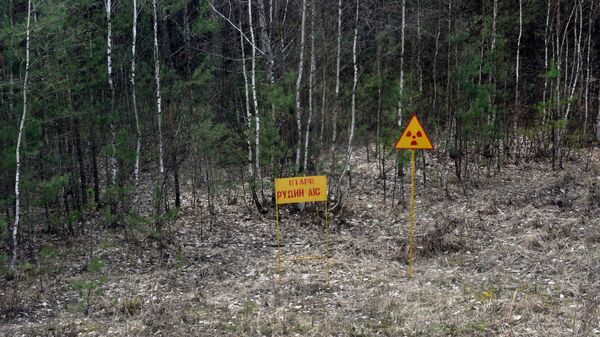A massive infrastructure project to create a waterway connecting the Black and Baltic seas may pose a potential risk to millions of people in Ukraine, due to its proximity to the most infamous nuclear disaster in history, the Guardian reports.
According to the newspaper, plans for the 2,500-km long waterway – coined E40 – involve dredging the Pripyat riverbed, which "snakes within 2.5km" of the ruins of the Chernobyl Nuclear Power Plant. Dredging has already taken place "in at least seven different places, five of which are within 10km of the reactor."
That work, which reportedly began in July after Ukrainian dredging company Sobi won the tender for digging up 100,000 cubic metres of sediment, defies the recommendations of the International Atomic Energy Association, which says the Chernobyl exclusion zone should be left undisturbed.
Now, several NGOs, such as Save Polesia, WWF, and BirdLife argue that the 2015 feasibility study for the project, carried out by the Maritime Institute of Gdansk, "failed to properly look at the implications of radioactive contamination from dredging inside the exclusion zone."
"Constructing the E40 will have a radiological impact on the construction workers and the population depending on the rivers… the IAEA recommends to leave the contaminated sediments in the Kyiv reservoir in place, to avoid exposure of the population downstream. In this context the construction of the E40 is not feasible," a French NGO Association pour le Contrôle de la Radioactivité dans l’Ouest (Acro) said following research commissioned by the Frankfurt Zoological Society.
Nuclear physicist and Acro chairman Dr David Boilley also told the newspaper that "the fact they want to build a dam and have boats going just by the bottom of the Chernobyl reactor" is simply "unbelievable."
"This is the most contaminated part of the exclusion zone," he said.
Meanwhile, Dmitrij Nadeev, a manager at Sobi, reportedly said that the company "did commission research on radiation and took soil samples."
"Analysis showed that the work can be done safely, but all workers were provided with personal protective equipment (PPE) and dosimeters. During the work, scientists took daily water samples downstream of the dredger," he explained.
The Chernobyl nuclear disaster struck on 26 April 1986, when an explosion at the station's Reactor 4 contaminated a vast territory.
Nearly 3,000 square miles of northern Ukraine and parts of Belarus have been depopulated as a result, with 1,000 square miles considered off-limits as an exclusion zone due to elevated levels of radiation.


